1. Name of the location of 90% of epistaxis
2. A genetic disorder that forms AV malformations in the skin, lungs, brain etc
3. Name of posterior vascular plexus in the nasal cavity causing posterior epistaxis
4. 1st line treatment for all epistaxis
5. The common brand name for anterior nasal packing
6. Chemical used in cautery sticks
7. Physically scaring complication of posterior nasal packing with foleys catheter
Coming soon..
Describing the Abnormal Ear
Remit
This page describes the fundamentals of describing the abnormal eardrum. The information is useful as you may be presented with an ear in you examinations (either a real patient or a picture of an ear) and be asked to describe what you see.
For students studying ENT for the first time it is helpful to have a schema to follow so that no area of the eardrum is missed and the correct descriptors (that is, the ones the examiner will understand) are used.
You should compare the two sides whenever possible and look at the normal one first unless directed to do otherwise.
The areas to look at are:
-
The pinna
-
The outer ear (EAC)
-
The eardrum (tympanic membrane)
You would finish by doing tuning fork testing and a clinical assessment of hearing.
The Pinna
Look at:
-
Site, size and shape
-
Scars behind the pinna (in the retroauricular crease)
-
Scars in front of the pinna (especially in front of the root of the helix)
-
Preauricular pits, cysts and discharge
-
Lesions on the pinna itself

(EAC) External auditory canal/meatus
Look for:
-
Wax
-
Bony growths
-
Signs of skin infection or dermatitis
-
Foreign bodies

The tympanic membrane
Examination of the drum is an art form in itself. It is also the most difficult part of the examination as it involves learning the language of otic anatomy and pathology.
Begin by referring to the section ‘Normal Eardrum Anatomy'. Once you have done this return and learn the following.
You must be familiar with the following terms in order to describe abnormalities of the eardrum.
They are:
-
Perforation
-
Central perforation
-
Marginal perforation
-
Attic perforation
-
Myringosclerosis (sometimes called tympanosclerosis)
Read more on these definitions below.
Click on their title to see a clinical example.

Perforation
This is simply a hole in the ear drum. Generally, they have a smooth edge and are round or kidney shaped. Some traumatic perforations are linear with ragged edges.
Central holes are found in the pars tensa and they all have a margin of eardrum around them. This margin may be very thin in some and amount only to the annulus itself. No matter how big the perforation, as long as there is a rim of drum or annulus around it, it is central.
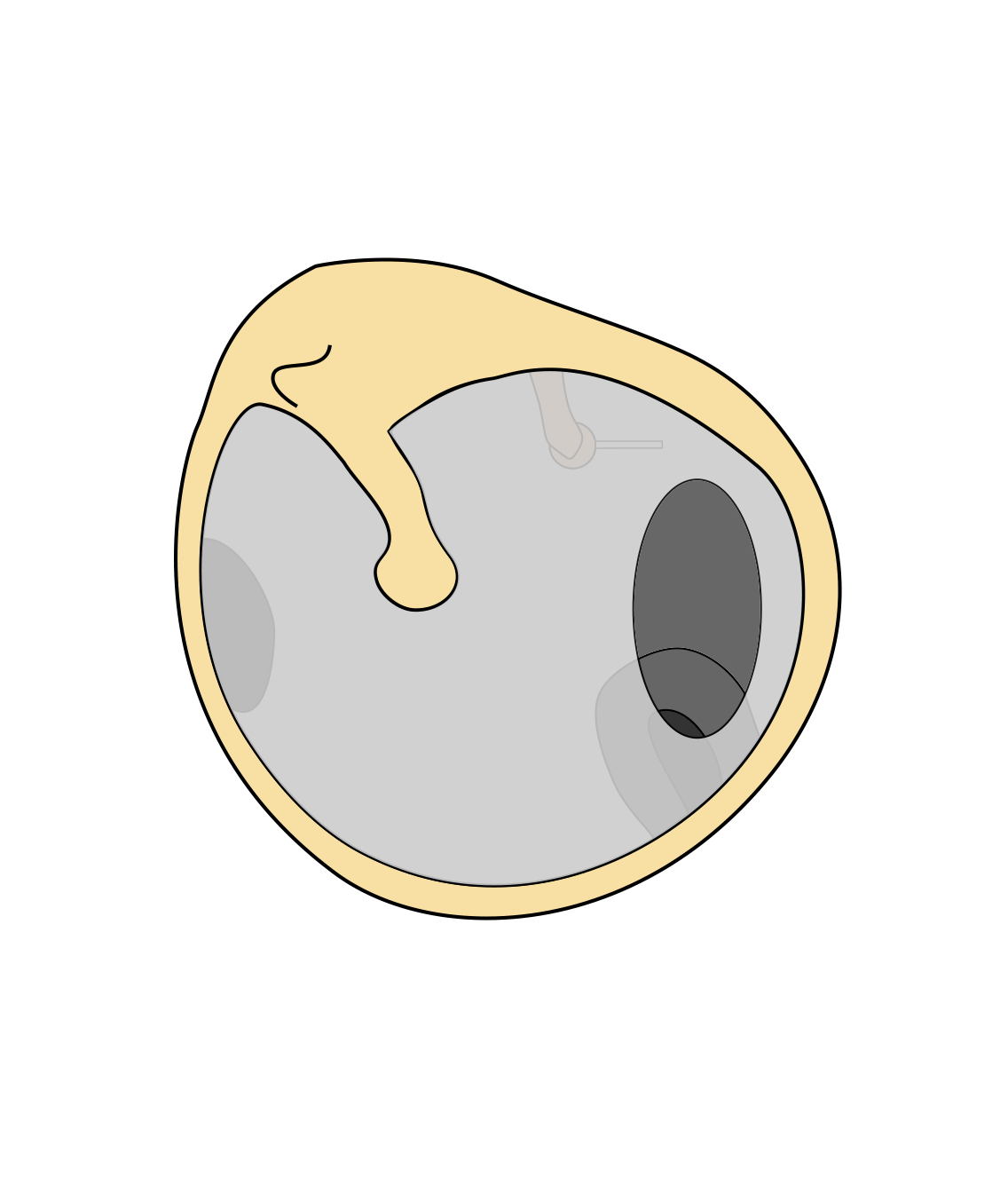
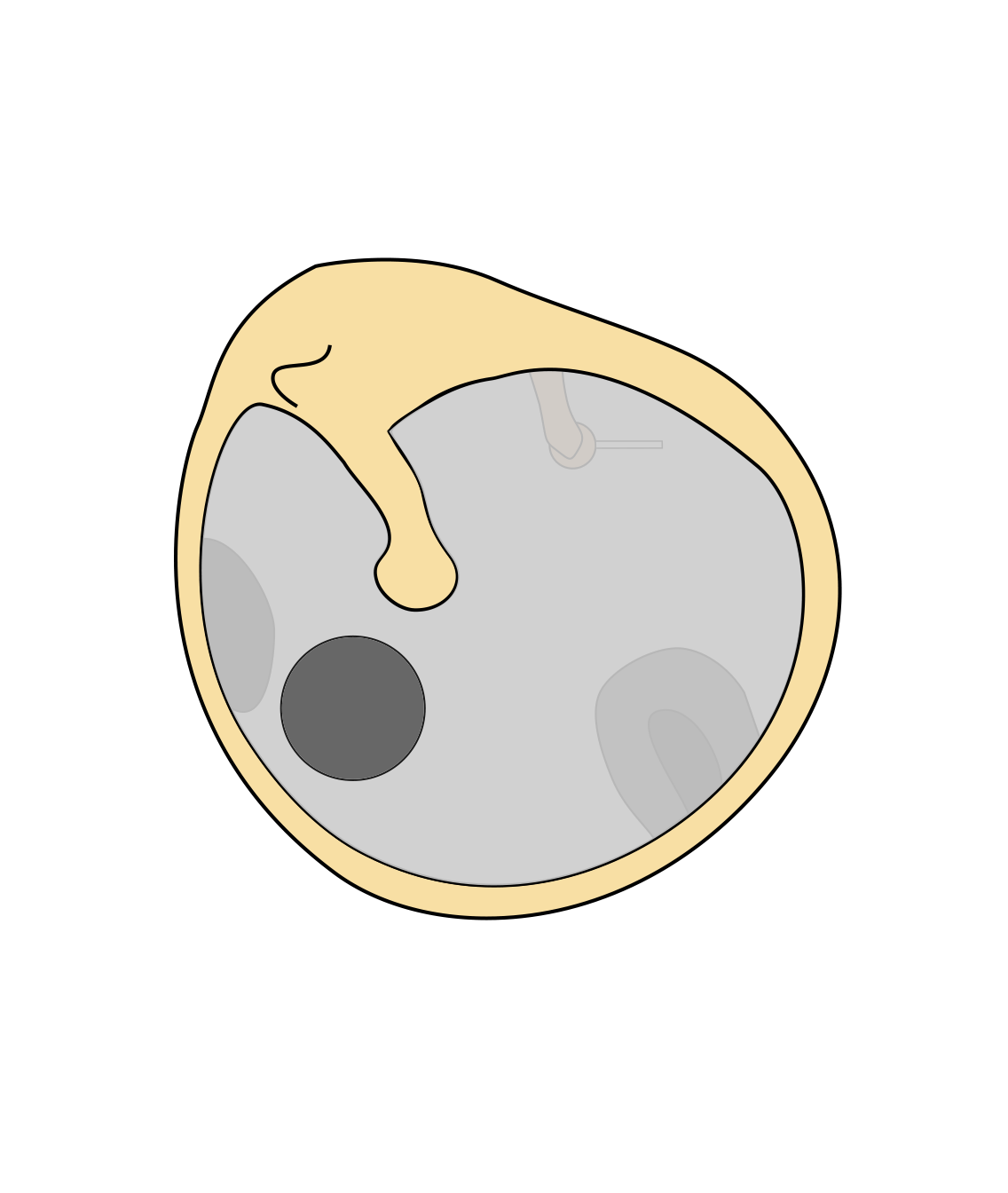
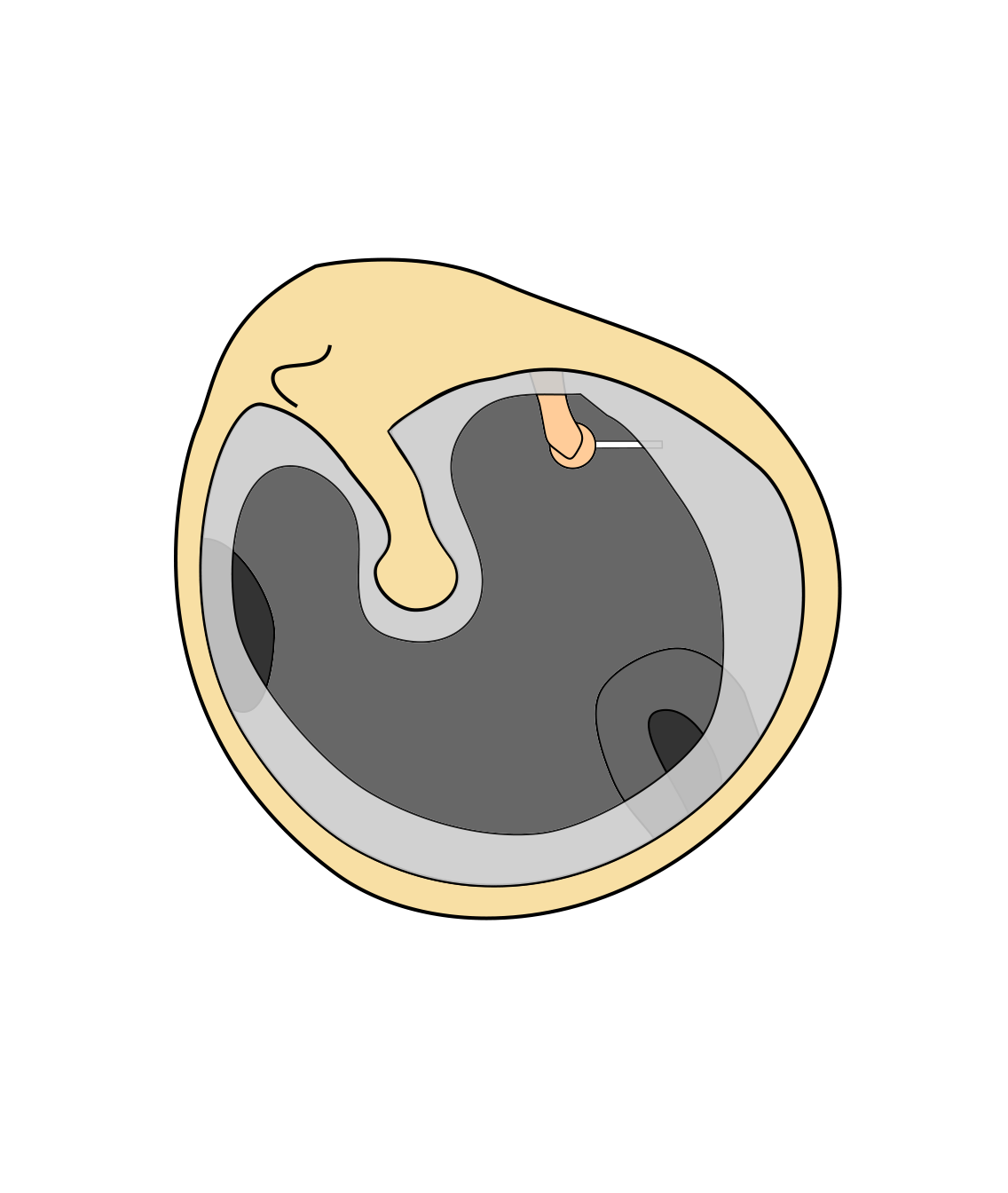
The three diagrams above show, from left to right, a posterior, central perforation; an antero-inferior central perforation; and a subtotal central perforation.
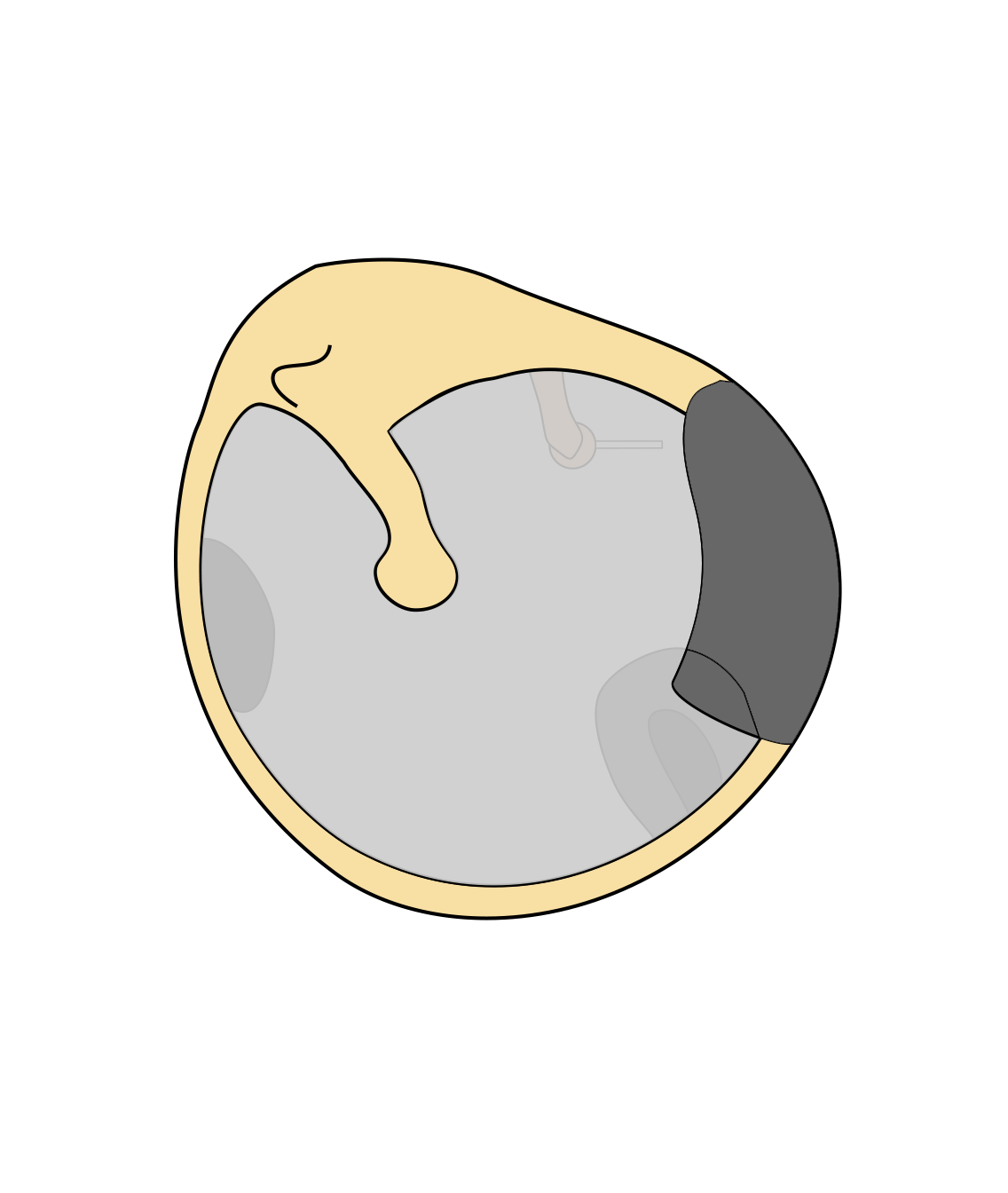
A perforation that doesn’t have a margin of drum or annulus. They are usually in the posterior half of the eardrum.
The diagram shows a posterior marginal perforation in the left ear drum.
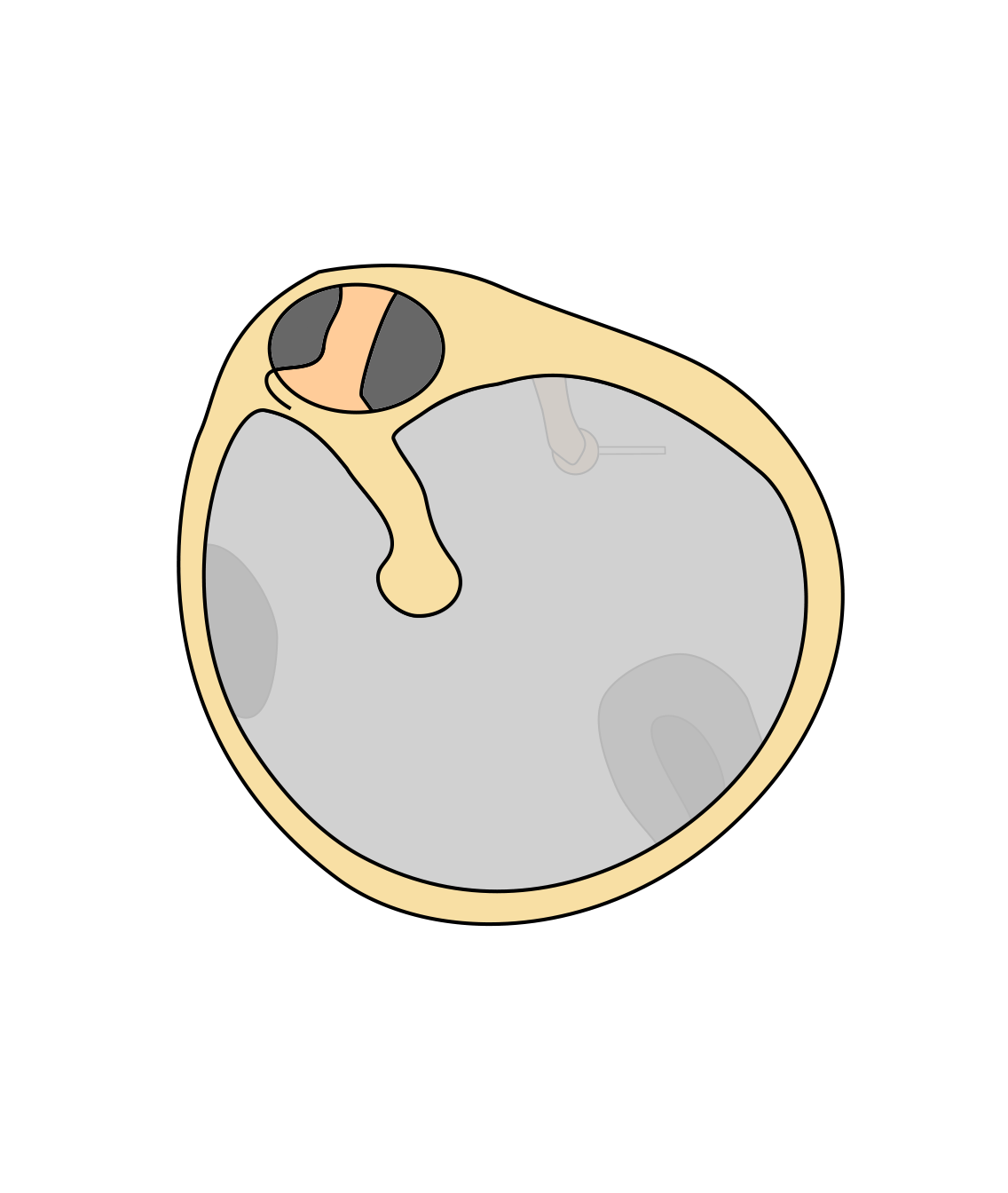
These are holes in the attic region and are marginal as well. This diagram shows that you can often see the neck of the malleus through an attic perforation. You can sometimes see the head too.
Chalky white patches in the ear drum. They are a result of damage to the drum (inflammatory or traumatic) and are of little relevance.
This is a wet patch on the eardrum that is caused by de-epithelialisation of the drum. The aetiology is uncertain. The picture below shows it.

Test yourself on perforations in our Quiz section
Tuning fork tests
Tuning fork tests still crop up frequently so you need to know how to do them correctly and to know what the results mean. Their clinical relevance is limited to Primary Care and other situations where patients attend with deafness but where there is no Audiology available. This is sometimes the case in hospital, especially in the Accident Department and on Medical wards.
The two tests you will be expected to know are Weber’s test and Rinne’s test.
For more on these examinations please visit our Tuning fork tests page.

